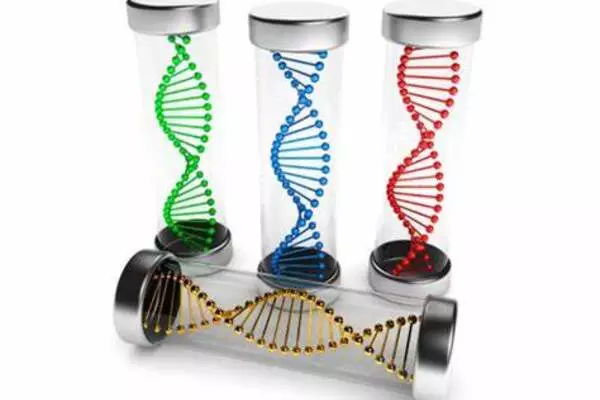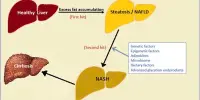RNA vaccines, such as those developed by Pfizer-BioNTech and Moderna, had previously shown efficacy and safety. These vaccines were created utilizing a method known as messenger RNA (mRNA), which instructs the body’s cells to manufacture a harmless component of the target virus (in this case, the SARS-CoV-2 virus’s spike protein) and elicit an immune response.
Researchers demonstrated that by adding synergistic self-adjuvanting qualities to COVID-19 RNA vaccines, they could greatly improve the immunological response induced in mice.
RNA vaccines against Covid-19 have been shown to reduce illness severity. However, a group of MIT researchers is striving to improve them. The researchers demonstrated that by modifying the vaccine design, they could create Covid-19 RNA vaccines that stimulate a greater immune response in mice at a lower dose.
Adjuvants are chemicals that are routinely used to boost immune responses to vaccines, although they have yet to be employed in RNA vaccines. The MIT researchers modified both the nanoparticles used to deliver the Covid-19 antigen and the antigen itself to increase the immune response without the use of a separate adjuvant in this investigation.
If this sort of RNA vaccination is further developed for human usage, it could help to lower costs, reduce the dosage required, and potentially lead to longer-lasting immunity. The vaccine caused a high immune response when administered intranasally, according to the researchers’ testing, as compared to the reaction elicited by standard, intramuscular vaccination.
With the promise of mRNA technologies being realized with the Covid vaccines, we thought that this would be a fantastic opportunity to see if C3d might also be able to play a role as an adjuvant in mRNA vaccine systems.
Daniel Anderson
“With intranasal vaccination, you might be able to kill Covid at the mucus membrane, before it gets into your body,” says Daniel Anderson, a professor in MIT’s Department of Chemical Engineering, a member of MIT’s Koch Institute for Integrative Cancer-Research, and the study’s senior author. “Because they don’t require an injection, intranasal vaccines may be easier to administer to many people.”
The researchers believe that the effectiveness of other types of RNA vaccines that are now in development, including vaccines for cancer, could be improved by incorporating similar immune-stimulating properties.
Former MIT postdoc Bowen Li, who is now an assistant professor at the University of Toronto; graduate student Allen Jiang; and former MIT postdoc Idris Raji, who was a research fellow at Boston Children’s Hospital, are the lead authors of the new study, which appears today in Nature Biomedical Engineering. The research team also includes Robert Langer, the David H. Koch Institute Professor at MIT and a member of the Koch Institute, and several other MIT researchers.

Boosting immunity
RNA vaccines consist of a strand of RNA that encodes a viral or bacterial protein, also called an antigen. In the case of COVID-19 vaccines, this RNA codes for a segment of the virus’s spike protein. That RNA strand is packaged in a lipid nanoparticle carrier, which protects the RNA from being broken down in the body and helps it get into cells.
Once delivered into cells, the RNA is translated into proteins that the immune system can detect, generating antibodies and T cells that will recognize the protein if the person later becomes infected with the SARS-CoV-2 virus.
Although the original Covid-19 RNA vaccines created by Moderna and Pfizer/BioNTech elicited powerful immune responses, the MIT team wanted to investigate whether they could improve their effectiveness by designing them to have immune-stimulatory qualities.
The researchers used two alternative ways to increase the immunological response in this investigation. For the first, they focused on a protein called C3d, which is part of the complement system, an arm of the immune response. This group of proteins aids the body’s defense against infection, and C3d’s job is to attach to antigens and boost the antibody response to those antigens. For many years, scientists have been researching the potential of C3d as a molecular adjuvant for protein-based vaccines such as the DPT vaccine.
“With the promise of mRNA technologies being realized with the Covid vaccines, we thought that this would be a fantastic opportunity to see if C3d might also be able to play a role as an adjuvant in mRNA vaccine systems,” adds Jiang.
To that goal, the researchers modified the mRNA to encode the C3d protein fused to the antigen, such that cells receiving the vaccination create both components as one protein. The researchers adjusted the lipid nanoparticles used to administer the RNA vaccination in the second phase of their technique so that, in addition to assisting with RNA transport, the lipids naturally trigger a higher immune response.
To find the best lipids, the researchers constructed a library of 480 lipid nanoparticles with various chemistries. All of them are “ionizable” lipids, meaning they become positively charged when exposed to acid. The original Covid RNA vaccines also contained ionizable lipids, which aid nanoparticle self-assembly with RNA and aid target cell uptake of the vaccination.
“We knew that nanoparticles could be immunostimulatory, but we weren’t sure what chemistry would be required to optimize that response. Rather than attempting to create the perfect one, we created a library and evaluated it, and through that we identified some chemistries that appeared to improve their response,” Anderson explains.
Toward intranasal vaccines
The researchers tested their new vaccine, which included both RNA-encoded C3d and a top-performing ionizable lipid identified from their library screen, in mice. They found that mice injected with this vaccine produced 10 times more antibodies than mice given unadjuvanted Covid RNA vaccines. The new vaccine also provoked a stronger response among T cells, which play important roles in combating the SARS-CoV-2 virus.
“For the first time, we’ve demonstrated a synergistic boost in immune responses by engineering both the RNA and its delivery vehicles,” says Li. “This prompted us to investigate the feasibility of administering this new RNA vaccine platform intranasally, considering the challenges presented by the mucociliary blanket barrier in the upper airways.”
The researchers noticed a comparable significant immunological response in the animals when they administered the vaccination intranasally. An intranasal vaccination, if developed for human use, could potentially provide increased protection against infection by eliciting an immune response within the mucosal tissues that border the nose passages and lungs.
















